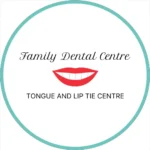DNA Digest
When we talk about women’s health, osteoporosis and bone strength often come up-especially as we age. But did you know one of the first bones to weaken isn’t in your spine or hips, but your face? It’s called the maxilla, and it’s not just your upper jaw. This key bone reaches up to the lower part of your eyes and holds up your cheekbones, shaping your face. As a functional dentist, I’ve seen how the maxilla’s health connects to how we look, breathe, and feel-and it’s something women need to hear about.
The Maxilla: Your Face’s Foundation
The maxilla starts to resorb-or shrink-earlier than most bones, often in our 30s. Research shows that facial bone loss, including the maxilla, can begin as early as this decade due to natural aging and hormonal shifts, especially in women.
(1) After menopause, dropping estrogen levels speed this up, since estrogen helps keep bones dense.
(2) But many of us start with weaker maxillae even before then. Why? Modern habits like eating soft foods and chewing less have led to smaller, less developed facial bones over time. Our ancestors chewed tough foods like roots and meat, giving them wider, stronger faces. Today, softer diets mean smaller maxillae-and weaker foundations. A shrinking maxilla changes more than your smile. As it resorbs, your cheekbones lose support, your eyes may sink, and your jawline softens. How many women do you know who’ve gotten fillers or Botox to fix these changes, without knowing the real cause? It’s not just skin deep-it’s the bones underneath. Studies confirm that maxillary bone loss alters facial structure, often starting in the 30s and worsening with age.
(3) Bone Health Starts with Chewing. Here’s the exciting part: we can fight back. Bone grows when it’s stressed, like how lifting weights builds your arms. Chewing harder foods can strengthen your maxilla. Research shows that consistent chewing boosts jawbone density over time.
(4) Try eating crunchy veggies and nuts or even chewing sugar-free gum-it wakes up your jaw. Yet, many women live on soft diets-smoothies and processed snacks-that don’t challenge their bones enough. A weak maxilla also narrows your airway, making breathing harder, especially at night. Journalist James Nestor, in his book Breath, shared how expanding his upper jaw widened his airway improved his health.
(5) This method, called orthodontics, uses dental appliances to gently grow the maxilla-even in adults. Better breathing means better sleep and more energy, which every woman deserves.
Why Women Need This Conversation
We’re told to lift weights for osteoporosis, and that’s true—strong bones are our structure. But women often spend more on cosmetics than gym memberships. What if we focused on the bones beneath the surface instead? A healthy maxilla fights facial osteoporosis, keeps your airway open, and supports your posture by aligning your head and neck. Unlike fillers, these fixes last.
What You Can Do Today
Start simple: swap soft snacks for carrots or apples. Chew gum after meals to work your jaw. If you snore or feel tired despite sleep, talk to a functional dentist about your airway. And keep lifting weights-your whole skeleton will thank you. Women deserve to know that bone health isn’t just about avoiding breaks. It’s about breathing well, aging confidently, and feeling strong. Let’s talk about the maxilla-not just in dental chairs, but everywhere. When we support our bones, they support us back.
Read More:
Recommended Products for Posture Improvement
References:
1. Levine JP. Identification, diagnosis, and prevention of osteoporosis. Am J Manag Care. 2011;17 Suppl 6:S170-S176.
2. Riggs BL, Khosla S, Melton LJ 3rd. Sex steroids and the construction and conservation of the adult skeleton. Endocr Rev. 2002;23(3):279-
302. doi:10.1210/edrv.23.3.0465
Books, an imprint of Penguin Random House LLC; 2020.
3. Shaw RB Jr, Kahn DM. Aging of the midface bony elements: a three-dimensional computed tomographic study. Plast Reconstr Surg.
2007;119(2):675-683. doi:10.1097/01.prs.0000246596.79795.a8
4. Kiliaridis S, Bresin A, Holm J, Strid KG. Effects of masticatory muscle function on bone mass in the mandible of the growing rat. Acta Anat (Basel). 1996;155(3):200-205. doi:10.1159/000147805
5. Nestor J. Breath : The New Science of a Lost Art. Riverhead
Recommended Reading
If you are interested in learning more readings from Dr. Emily Splichal about the science of posture and how it affects your optimal health, see below.
What if the key to movement longevity wasn’t just strength or flexibility—but rather sensory awareness?
In Sensory Sapiens, Dr. Emily Splichal, a leading functional podiatrist and human movement specialist, reveals how sensory stimulation, foot-to-core activation, and neuroplasticity shape the way we move, age, and thrive. Blending cutting-edge research with practical applications, this book explores how reconnecting with your body’s sensory intelligence can enhance balance, prevent injury, and optimize lifelong movement.
Through proprioceptive training, textured stimulation, vibration therapy, and breathwork, Dr. Splichal provides a blueprint for unlocking your body’s full potential. Whether you’re an athlete, therapist, or simply looking to move better for life, Sensory Sapiens will transform the way you think about movement, longevity, and the power of your nervous system. Your movement future begins with sensation.
Are you ready to feel move and move better?
About Dr. Emily Splichal
Dr. Emily Splichal, DPM, MS, CES, is a functional podiatrist, human movement specialist, and founder / CEO of Naboso. She is internationally known for her work in barefoot science, sensory integration, and movement longevity.
.
Family Dental Centre Home Page: www.familydentalguelph.com










